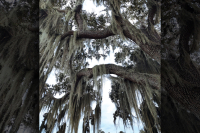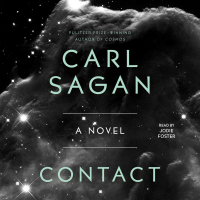WCU’s fall commencement set for Dec. 18
Western Carolina University will honor its fall graduating class, and recognize a group of graduates who received their degrees after this year’s summer school sessions, as the university holds fall commencement at 2 p.m. Saturday, Dec. 18.
The ceremony at the Ramsey Regional Activity Center is open to everyone and no tickets are required for admission. WCU Chancellor John W. Bardo will preside over commencement and deliver the charge to the fall semester degree candidates and summer graduates.
WCU’s fall class includes about 690 students who are currently completing academic requirements to receive their degrees. Graduates who completed degree requirements during summer school and who already have been conferred degrees also are eligible to participate in the ceremony.
Commencement activities will include the awarding of a posthumous honorary doctor of arts degree to Josefina Maria Niggli, a writer and teacher who led the development of WCU’s theater arts program and inspired legions of students during her two decades of teaching at the university. WCU’s Office of Undergraduate Studies coordinated a campuswide celebration of Niggli’s life during the 2009-10 academic year to mark the 100th anniversary of her birth.
WCU senior Lucas Owen Ladnier, a Hickory native and member of the Honors College, will deliver the primary commencement address.
The commencement audience should enter the Ramsey Center through one of four upper concourse doors. Those with physical disabilities should use the northeastern upper entrance, adjacent to the stands of E.J. Whitmire Stadium.
For more information about commencement, contact the WCU Registrar’s Office at 828.227.7216 or e-mail This email address is being protected from spambots. You need JavaScript enabled to view it..
Martin DeWitt, founding curator and director of WCU art museum, to retire
Martin DeWitt, founding director and curator of the Fine Art Museum at Western Carolina University, has announced his retirement.
“I think the timing is right for changes,” said DeWitt, whose career spans more than 30 years in museum administration. He will end his work at the museum in December.
“Martin has been an outstanding founding director of the Fine Art Museum,” said Robert Kehrberg, dean of WCU’s College of Fine and Performing Arts. Kehrberg praised DeWitt for his strength in defining a vision for the museum and cultivating it as a cultural destination. He also credited DeWitt with strengthening the university’s ties with the Eastern Band of Cherokee Indians.
DeWitt joined the university in 2003, with the museum opening in 2005 as part of WCU’s Fine and Performing Arts Center, a $30 million, 122,000-square-foot facility. With a mission of cultural enrichment for the region, FAPAC also houses a 1,000-seat performance hall and classrooms, studios and offices for the School of Art and Design.
As founding director, DeWitt launched the 10,000-square-foot Fine Art Museum, which comprises a main gallery and three auxiliary spaces. He was involved in the facility’s construction, curated the museum’s permanent collection (which grew from about 400 objects to now more than 1,200), drafted the museum’s policies and procedures — a blueprint for the facility’s operation — and scheduled the museum’s inaugural exhibitions.
Denise Drury, curatorial specialist at the museum, has been named the museum’s interim director beginning in January, when the museum reopens after the university’s holiday break. Prior to her arrival at the museum in January 2010, Drury spent four years, including two as executive director, with 621 Gallery, a nonprofit, contemporary visual art space in Tallahassee, Fla.
“Ms. Drury brings experience, professionalism and forward-looking vision to this position,” Kehrberg said. A national search is planned to permanently fill the director’s position by July 1, 2012.
Since the museum opened, DeWitt has overseen approximately 100 exhibitions, ranging from historical and collaborative projects to work by WCU students and internationally known artists alike.
“These exhibits, like children, have all been favorites,” DeWitt said. Many accomplished regional artists have exhibited at the museum, among them Harvey K. Littleton, a pioneer of the studio glass movement and creator of the vitreograph technique of printing; Lewis Buck, who creates paintings and assemblage pieces; glass artist Richard Ritter; and Mike Smith of Tennessee, who photographs contemporary Appalachia. “Fragile Earth, an environmental-themed competition, featured works by 40 regional artists, and DeWitt and Drury recently oversaw the installation of a one-year outdoor sculpture exhibit in the FAPAC courtyard that features five artists from the Southeast.
Exhibits by American Indian artists have been “especially rewarding,” DeWitt said. These include “Hive” by Natalie Smith, “Pilgrimage Ribbon” by Luzene Hill, and “Reclaiming Cultural Ownership” by Shan Goshorn. DeWitt has showcased the expanding permanent collection in an ongoing “Worldviews” series.
Colleagues say DeWitt has a particular talent for discussing complex concepts in plain language and for gallery presentation that draws visitors into exhibits, a valuable skill in a university setting. DeWitt teaches an exhibition practicum class where students learn how museums and galleries function.
“He is so astute at judging and evaluating art and being able to give thoughtful comments and feedback to artists,” said Hill, an Eastern Band member and conceptual artist. “His manner is so wonderful. He’s accessible and approachable. I think he’s fantastic in his job and in his life.”
DeWitt received his master’s degree in fine art from Illinois State University in 1978. He began his career in 1980 as executive director of the Rockford Art Association in Illinois. From 1989-2003, he was director of the Tweed Museum of Art at the University of Minnesota Duluth. A painter and sculptor, DeWitt widely exhibits his own work and looks forward to more time in his studio. Other postretirement plans include appraising art; traveling, particularly to Mexico and Latin America, countries he loves and has long enjoyed; and moving with his wife, Sharon Sanders, a federal government employee, to Minneapolis to be closer to family.
For more information about WCU’s Fine Art Museum, contact Drury at 828.227.3591 or This email address is being protected from spambots. You need JavaScript enabled to view it., or go online to fineartmuseum.wcu.edu.
WCU to re-create radio broadcast of ‘A Christmas Carol’ Dec. 9
The radio version of a classic holiday ghost story, “A Christmas Carol,” will be presented at 7:30 p.m. Thursday, Dec. 9, at the Fine and Performing Arts Center at Western Carolina University.
A 30-minute preshow concert will start the evening off with holiday music until the 8 p.m. live broadcast begins.
The show is organized and produced by three WCU faculty members who collaborated two years ago on their first radio re-creation, “The War of the Worlds,” and last year’s award-winning “On the Home Front, Nov. ’44.”
Steve Carlisle, associate dean of the Honors College, is the show’s director; Bruce Frazier, Carol Grotnes Belk Distinguished Professor of Commercial and Electronic Music, is the musical director. Don Connelly, associate professor and head of the Department of Communication, is producer of the show.
The broadcast is a re-enactment of the Campbell’s Playhouse adaptation of “A Christmas Carol,” from 1938.
“The audience is watching a radio production. We don’t play to the audience. We play to the microphone,” Connelly said. “It’s a fun thing to do. What’s neat is to expose people to this unique form of storytelling.”
The one-time performance stars Arthur Anderson, who will reprise his role as the Ghost of Christmas Past from the original Orson Welles 1938 radio production. Anderson was 16 years old at the time.
The Dec. 9 performance is being produced with permission of the show’s original sponsor, Campbell’s Soups.
The audience will get the feel of the holiday spirit as vintage Christmas card images from the archive collection of Hallmark Cards of Kansas City are projected onto a large screen at the back of the stage, said Connelly. The Hallmark artists selected cards from the late 1930s specifically for the WCU show.
“A Christmas Carol” will be performed exactly as it was originally done, including live sound effects, a 20-piece orchestra and an eight-person choir, Connelly said.
Frazier has created his own musical scores for the performance. The original 1938 musical director was Bernard Herrmann, who used a variety of music for the original show, such as traditional Christmas carols and folk music to accompany the festive scenes, and an original musical underscore to play during the dramatic moments.
“We are using a small orchestra and a chorus of carolers and will highlight School of Music faculty vocal soloists Mary Kay Bauer and Dan Cherry,” said Frazier. “‘A Christmas Carol’ is a ghost story with a happy ending and the music reflects the contrast of spine-chilling creepiness and unbridled joy.”
Prior to the start of the show at 7:30 p.m., the Biltmore Company will host a display of its first-edition copy of “A Christmas Carol” by Charles Dickens, on loan to WCU from the library in the Biltmore House.
The evening’s events are part of the university’s Quality Enhancement Program, enabling students to experience a practical application of what they are learning. The lobby area of the Fine and Performing Arts Center will feature English students displaying a synopsis of papers on Dickens and his Christmas story. The evening’s printed program will feature papers written this semester by students in a 19th-century English literature class taught by Brent Kinser, associate professor of English.
A number of other students in various departments across campus are involved in this professional collaboration.
For tickets, contact WCU’s Fine and Performing Art Center at 828.227.2479 or visit tickets.wcu.edu. All seats are $10. Advance tickets are suggested.
Star of WCU’s ‘A Christmas Carol’ to discuss 75-year broadcast career, sign books Dec. 7
Western Carolina University will host a public presentation and book signing featuring Arthur Anderson, one of the original radio performers of 1938’s “A Christmas Carol,” from 2:30-4 p.m. Tuesday, Dec. 7, in the multipurpose room of Blue Ridge Hall.
As part of WCU’s Visiting Scholar Program, Anderson will present “From Orson Welles to Lucky the Leprechaun” and discuss his lifelong career in radio, television, movies and stage. He is author of two publications: Let’s Pretend and the Golden Age of Radio, and An Actor’s Odyssey: Orson Welles to Lucky the Leprechaun.
The session also will feature Anderson’s wife, Alice, who was an actress and casting director for NBC during the early 1950s.
Anderson’s visit to WCU coincides with his appearance two days later as he reprises his 1938 role as the Ghost of Christmas Past in the Campbell’s Playhouse adaptation of “A Christmas Carol.” Now 88, he was 16 at the time of the original production.
Western Carolina’s re-created radio version will be held at 7:30 p.m. on Thursday, Dec. 9, in the Fine and Performing Arts Center, complete with live studio orchestra, choir and sound effects. The performance is a fundraising event for student scholarships.
Anderson started his acting career in network radio at the age of 12. His long-running role on the CBS radio show “Let’s Pretend” launched a career that has spanned more than 75 years. Anderson became a network radio regular, playing numerous roles on the CBS and NBC networks throughout the “golden age of radio.”
While the name Arthur Anderson may not sound too familiar to some, many people have likely heard his voice for 29 years as the voice of Lucky the Leprechaun for General Mills Lucky Charms cereal.
For more information about Anderson’s visit or WCU’s production of “A Christmas Carol,” contact Don Connelly, head of WCU’s Department of Communication and producer of the show, at 828.227.3851.
Partner institutions reaffirm commitment to Native health
Western Carolina University, Wake Forest University and the Eastern Band of Cherokee Indians have reaffirmed their partnership to promote Native health initiatives.
Since 2006, the three institutions have collaborated to support the Culturally Based Native Health Program, or CBNHP. The CBNHP has two components: a graduate and undergraduate Native health certificate offered through WCU; and a Native youth-to-health careers initiative summer camp that takes place at Wake Forest.
“We are recommitting ourselves to initiatives we started four years ago,” said Lisa Lefler, a professor of medical anthropology and director of the WCU component of the program.
Principal Chief Michell Hicks of the EBCI, WCU Chancellor John Bardo and Provost Jill Tiefenthaler of Wake Forest formally updated the agreement at a meeting Nov. 16 on the WCU campus. Provisions of the new agreement include an extension of the terms through August 2015 and for Wake Forest to support qualified EBCI applicants. WCU agrees to “provide in-kind technological support and consultation to promote these collaborative efforts and support of American Indian students in education and career development.”
Bardo stressed the partnership’s strength and value. Tiefenthaler, citing the economy, said institutions are “in the age of partnerships.” Hicks said the tribe is interested in expanding the relationship to include other fields, such as architecture or accounting, for example.
The Native health certificate was developed with tribal community members and health professionals to provide a curriculum based on culture to inform providers about the unique nature of Indian health policy and the historical and cultural contexts of heath. This 12-hour, fully online program is one of the first in the nation to include a partnership with a Native community.
The second component of the CBNHP, the medical career counseling and technologies program, also called MedCat, responds to the universal need for more Native health care workers by recruiting high school students interested in medical careers and related technologies.
The CBNHP works in other ways to heighten awareness of Native health issues. A public lecture series featured its second speaker this fall semester, and a concert and free symposium in October raised raise awareness of the intersection of environmental, health and indigenous issues related to the destruction of mountain land.
Athletics, smathletics; new chancellor will care about academics, too
Athletics won’t trump academics in the selection of a chancellor for Western Carolina University, committee members charged with hiring a new top leader assured worried professors this week.
“I don’t want you to be concerned,” said Jerry Baker, head of Baker and Associates, a search firm being paid $75,000 to guide the 16-member selection committee through the process. “We won’t let any one voice out shout the others.”
The comments came at the outset of a four-hour public comment session organized by the selection committee. Faculty, staff, students and alumni, community members and supporters of intercollegiate athletics were each given hour-long slots.
Vicki Szabo, a member of the history department, said recent news coverage of the search had given her and others the impression athletics might dominate, or play a larger role than merited, in the selection.
Committee members were dismissive of the news coverage in question, published recently in the Asheville Citizen-Times.
“I’d take it for whatever it’s worth at face value, it is the Asheville Citizen-Times,” said Kenny Messer, a WCU alum and past president of the Catamount Club, which helps raise money for WCU athletics.
Charles Worley, an Asheville lawyer and former mayor of that city who, in his time, has been on the receiving end of less-than-flattering coverage (which is not the same as less-than-accurate coverage), saw an opportunity to educate listeners regarding media coverage in general and newspapers in particular.
“You know how newspapers do,” Worley said in an ominous tone of voice. “They tend to pick on things and take it out of context.”
After that, chairman Steve Warren opted for a gentler approach, reminding those in the audience — and possibly his selection committee — there must be a balance struck in the hiring of a replacement for Chancellor John Bardo, who is retiring next summer after more than 15 years.
“Athletics plays a role at this university, and the new chancellor needs to understand this. And everybody else,” Warren said, before quickly adding that academics would of course remain a top priority.
Debate about the role WCU plays in the region it serves also surfaced. Many professors and staff members emphasized a unique ability of the university to help Western North Carolina and its people. By preserving the culture and environment, saving the ecosystems, and so on — plus providing “the children of the mountains” with an opportunity to receive a quality higher education near home. Some, however, spoke to the need for WCU to be visible on a national, even international scale, and to focus on being a topflight academic institution.
Fred Hinson, senior associate vice chancellor of enrollment management, has been at the university for 45 years. He spoke against hiring someone who needed on-the-job-training. WCU, along with other universities in the UNC system, are facing the prospect of draconian budget cuts.
“We’re at a stage here at the university … (where we) need experience,” Hinson said. “We don’t need a lawyer or a business leader at this time.”
Several faculty and staff members discussed problems with morale. They said a chancellor, in these hard times (low salaries in general, no pay raises in several years, a poor retention rate, key leadership positions unfilled, potentially massive budget cuts looming) must recognize and reward staff in other ways. Recognizing their hard work and dedication, allowing professionals to be professionals, and such intangibles were mentioned.
David Claxton, in WCU’s department of health, physical education and recreation, told selection committee members faculty and staff members have generally had a “great relationship” with the university’s provost (that post is currently open, too).
Claxton added, “sometimes it has been harder to communicate with our chancellor.”
Want to be heard?
There is a questionnaire posted on the Western Carolina University search committee website: www.chancellorsearch.wcu.edu. Anyone can participate. This allows for comment on the “state of the university,” preferred priorities of the chancellorship, suggested background of candidates and other pertinent issues.
The next meeting of the selection committee is scheduled for 3 p.m. Monday, Dec. 6, in the Hospitality Room of the Ramsey Center. Meetings are open to the public, and can be closed only for reasons specified in the state’s Open Meetings Law.
Putting a rose in his cap: Bob Buckner’s final season as WCU marching band director ends with trip to Parade of Roses
By Brittney Burns • SMN Intern
While preparing Western Carolina University’s Pride of the Mountains marching band for their debut appearance in the 2011 Tournament of Roses Parade, band director Bob Buckner and wife — band auxiliary coordinator Donna — announced their retirement.
Buckner, a Waynesville resident, is serving his 20th year as WCU’s marching band director. Although Buckner and his wife, who joined the band family the year after her husband, will officially step down in June, they both plan to stay involved with the band.
“We want to retire while we are still in good health and able to still do the things we want to,” said Buckner. “I still plan to come back and help the new director in any way I can. I just don’t want to have to work every day.”
Alyssa Pierce, a WCU junior and marimba player for the Front Ensemble, is saddened by Buckner’s announcement.
“We are all sad to see Bob leave, but we know he will always be a part of this band,” said Pierce. “I am confident that he will remain an inspiration to us and to whoever comes to lead the next era of the Pride of the Mountains.”
The Buckners have plenty to keep them busy once they retire. One of the things they look forward to the most is being able to spend more time with their grandchildren.
“We have three grandchildren who live right here in Sylva,” said Buckner. “Most people retire to travel the world, but we have been lucky enough to have already traveled all over the world. I just want to hang around WCU with my family.”
Buckner and his wife also plan to spend retirement relaxing and working on their golf games, a hobby they both enjoy.
Both Buckner and his wife have built an empire around the Pride of the Mountains. During Donna Buckner’s time with the band she has not only acted as the auxiliary coordinator while still being able to be a substitute teacher, she founded the color guard as well as the dance team. Donna Buckner started the Catamount color guard during her first year working with the band. It began with 12 girls and has grown to a squad of 36 women who play an integral part in the Pride of the Mountains performances. She has coached girls on the dance team who have gone on to perform for NFL professional teams such as the Redskins, Falcons and Panthers.
Buckner’s reign as director is full of milestones. One of his most notable accomplishments is that there are currently more than 100 active band directors in North Carolina who are WCU graduates.
“I think the number of active band directors who are former Catamounts speaks volumes not only about the marching band, but about Western’s music program in general,” Buckner said.
One of Buckner’s proudest accomplishments while working at WCU came in 2009.
“Receiving the Sudler trophy was a really big deal for our band; it’s the highest honor possible,” said Buckner. “It says a lot considering the size of school we are and highlights how good we really are.”
The most recent accomplishment the band has experienced is one they are still preparing for. On Dec. 30 of this year, the Pride of the Mountains Marching Band will join the country’s most talented bands in the 2011 Tournament of Roses Parade in Pasadena, Calif.
Although excited to participate in this prestigious event, Bucker was not surprised.
“I was sitting at home writing the last show of September (of last year) when I first got the call; I was extremely excited, but I was kind of expecting it,” said Buckner. “We had just won the Sudler trophy and are an extremely talented band.”
Band member Stephen Eller was overwhelmed with the news about the Tournament of Roses Parade.
“When we were first told about the Rose Parade, I thought Bob was joking. Marching that day will be one of the highest honors this band has had thus far, and I am proud and excited to be a part of it,” said Eller.
After getting over the initial excitement, Buckner quickly began preparing the band for the performance. The first thing the band did was revise the 2010 pregame show to include the tune they will perform for the “TV Corner” portion of the parade. This allows them to incorporate practice for the performance without interfering with the plans that were already in play for football season.
The theme for this year’s parade is “Building dreams, friendships, and memories.” Instead of doing the predictable and choosing music to highlight the theme, Buckner wanted to approach it with a “hands on” idea. Assistant Director Matt Henley contacted a southern California, all horn band that mixes Brazilian, rock, country and Cuban flavors to develop their own unique sound, and made arrangements for WCU’s band to perform the band’s tunes at the second part of the Tournament of Roses BandFest.
“When they hear a 390-member strong band play their music — we are going to blow them away.” The two bands will perform together at BandFest, really embracing the theme of this year’s Rose Parade.
With the big day approaching quickly, the band is attentively working to straighten out all the last-minute details of the trip. The band’s staff coordinator, Rachel Rimmer, has worked with travel agents to single-handedly scheduled flights for each band member (totaling 396 people).
“Working out the logistics has been difficult,” said Buckner, “Rachel has been great handling all the travel. Believe it or not, we had some students who didn’t even have a photo ID.”
While the band staff sorts out the final details of the trip, Buckner has been encouraging students to work out and get in shape for the 6.5-mile hike of the parade.
“After all 396 people who will be marching that day actually line up, we measure just over 300-feet long,” Buckner said. “What people don’t realize is that the parade march expands over six miles and will be no easy feat.”
Band members have been regularly visiting the campus gym and joining fitness classes to prepare for the hike. Senior band member Shelby Harrell is taking preparing for the parade seriously.
“I’ve been hitting the gym a lot to prepare for 6-mile parade march. It’s so exciting to think about all of the people that will be there to watch our band,” said Harrell. “I have no doubt that we will be fully prepared for the parade and I know we are going to have the time of our lives.”
Buckner credits the band’s success to being a “real team effort” between himself and both of his assistant directors, Henley and Jon Henson.
“The most fun part of this entire experience is the real unique situation we have here — we are all from the band program at Tuscola High School,” said Buckner. “Three generations of mountaineers working together.”
According to Buckner, the best way to watch the Pride of the Mountain’s Rose Parade performance is the commercial-free, live streaming of the event on HGTV beginning with the BandFest performances on Dec. 30.
Public input sought in chancellor search
Members of the public will have an opportunity to have their voices heard by the search committee that will help select the next chancellor of Western Carolina University during a series of open forums Monday, Nov. 22.
Four hourlong meetings to seek public comment will be held in the theater of A.K. Hinds University Center on the WCU campus beginning at 1 p.m. Each session is designed for a specific constituent group, but all sessions are open to anyone who wants to participate.
The public forum schedule:
• Faculty members – 1-2 p.m.
• Staff members – 2-3 p.m.
• Students – 3-4 p.m.
• Alumni, community members and supporters of intercollegiate athletics – 4-5 p.m.
In addition to the open forums, members of the public also can share their thoughts on WCU’s next chief executive officer through a questionnaire that will be posted on the chancellor search committee’s website – chancellorsearch.wcu.edu.
The online questionnaire will allow visitors to the website to provide input on the “state of the university,” preferred priorities, suggested background of candidates, and any other pertinent issues.
All scheduled search committee meetings are open to the public. The Nov. 22 open forums are the only meetings that will have time for public comment.
Following the forums, the committee will meet at 1 p.m. Wednesday, Dec. 1, to discuss public feedback and review the official position description for the chancellor’s post. The meeting will be held in the Peele, Westmoreland Suhre, Hartshorn Hospitality Room of the Ramsey Regional Activity Center. Another meeting is set for 3 p.m. Monday, Dec. 6, in the Hospitality Room of the Ramsey Center.
The WCU Board of Trustees recently appointed a 16-member search committee to help select a successor for Chancellor John W. Bardo, who has announced his plans to step down next summer after more than 15 years in the position. The committee is working closely with Baker and Associates, an executive search firm, to identify a pool of candidates.
After reviewing candidates, the committee will recommend its top choices to the WCU trustees, who will forward the names of at least two nominees to Tom Ross, who takes over as University of North Carolina president later this year. Ross then will present his recommendation to the full UNC Board of Governors for final consideration and approval.
Search committee members are striving to have a new chancellor named and ready to lead the university by July 1.
Dillsboro puts out welcome mat for WCU
The town of Dillsboro will host Western Carolina University faculty, staff and students during a special event called “Destination: Dillsboro!” on Thursday, Nov. 18, from 5 to 8 p.m.
Designed to show Dillsboro’s appreciation for WCU, the event will feature merchants staying open late and offering free samples and discounts especially for the WCU community.
The evening will feature a raffle drawing for numerous prizes from Dillsboro merchants for faculty and staff and a scavenger hunt using the social network Twitter for students.
To be eligible for the prizes, faculty and staff will enter their registration forms into a basket at the Jarrett House, which is serving as headquarters for the event. Registration forms are being sent through the WCU e-mail system, and prizes will be drawn throughout the evening. Once visitors register at the Jarrett House, they will be given a new holiday shopping guide that provides an updated map of the town and ideas for holiday gift giving from Dillsboro.
Mayor Mike Fitzgerald will be greeting guests and making an official declaration of appreciation for WCU at the Jarrett House at 6 p.m.
“We’re looking forward to a great night,” Fitzgerald said. “The town will be decorated in purple and gold, but we’re rolling out the red carpet for the Catamounts. We hope WCU folks and their families will come down — if only for a little while — to check out the shops and eat at the restaurants. We’ve made a special effort to provide free child care and activities for the kids, so the whole family can enjoy the event.”
For WCU personnel with children, volunteers will provide free child care services at the Jarrett Memorial Baptist Church on Church Street. There will be 20 spots available from 5 to 6:30 p.m. and 20 spots from 6:30 to 8 p.m. Children ages 3 to 12 are eligible and advance reservations are required. Art activities, games and snacks will be provided. To RSVP for child care, contact Casey Hodges at This email address is being protected from spambots. You need JavaScript enabled to view it..
Destination: Dillsboro! is the latest event in a recent partnership forged the town and WCU. The overall goal of the partnership is economic revitalization. Numerous faculty, staff and students from across the university are working on a variety of projects including small business counseling, survey research, marketing, public relations, broadcasting, arts, entertainment and special events.
For more information about the Dillsboro/WCU partnership or any of the Nov. 18 activities, contact Betty Farmer, special assistant to the chancellor for Dillsboro, at This email address is being protected from spambots. You need JavaScript enabled to view it. or 828.227.3804.
— By Matthew Hoagland, WCU
Budget woes leave higher education institutions with tough choices
Up to 1,700 jobs, perhaps a whole campus eliminated — the dire picture painted this month by Erskine Bowles, president of the University of North Carolina system, on the state of higher education during these tough economic times isn’t pretty.
Locally, staff and faculty at Western Carolina University in Cullowhee, Southwestern Community College in Sylva and Haywood Community College in Clyde are preparing for significant budget cuts.
Most likely, a 10-percent reduction is coming. State colleges and universities across North Carolina, however, are outlining what they’d do in response to higher and lower reductions, as directed by the UNC system and The State Board of Community Colleges.
“We are hearing talk of impending heavy slashing and have been asked to prepare scenarios of how we would deal with 5-, 10- and even 15-percent cuts,” said Rose Hooper Garrett, public information officer for SCC, via email.
A year ago, the UNC system took a $70 million cut, or less than 3 percent.
Sorting it out
“At this point, it’s too early in the process to provide the actual impact of what a 10-percent budget reduction would do to the overall operations of WCU,” said Chuck Wooten, vice chancellor for administration and finance for the university.
“It’s fair to say that most likely we will have fewer class sections, more students in each class, more dependence on part-time faculty, reduced funds for faculty travel and professional development, fewer funds for general operations such as supplies and equipments, elimination of vacant positions, possible elimination of positions that are currently filled, and reduced funds for general maintenance of the physical plant of the campus.”
Here’s what is happening: North Carolina is facing a budget deficit of $3.5 billion.
At 5 percent, the UNC system would cut $135 million and likely eliminate 800 jobs. At 10 percent, the UNC system would cut $270 million and eliminate 1,700 jobs.
“We’re really going to impact the academic side,” the Associated Press quoted Bowles as saying.
Rose Harrell Johnson, president of Haywood Community College, said the community college would lose more than $1,306,478 with a 10-percent reduction.
“For comparison, the college received an increase of $1,213,111 in state funding this fiscal year because it had a 10.77 percent enrollment increase,” Johnson said. “If the budget reduction becomes reality, the college will lose its enrollment growth budget increase and potentially more.”
Among other measures, Garrett said SCC has been considering tuition increases.
“At the system office we will look at operations, contracts and personnel,” she said.
Preparing for the worst
Wooten said WCU anticipated budget reductions by making a number of decisions in the 2009-2010 fiscal year to take in budget reductions totaling about 8 percent, which eliminated 93.92 positions.
“After satisfying budget reductions for 2010-11, $4,404,792 remained for use against future budget reductions,” Wooten said.
WCU would see reductions of $8,638,874 at the 10-percent level and $4,319,437 at the 5 percent level, he said.
“WCU’s plan, which was submitted to the Office of State Budget and Management, would first offer up the full amount remaining from previous budget reductions ($4,404,792) to satisfy the 5-percent budget reduction plan, and campus divisions and departments have identified additional budget reductions ($4,234,082) to satisfy a 10-percent budget reduction plan … (this) would potentially eliminate 41.08 positions in the 2011-2012 fiscal year budget.”













